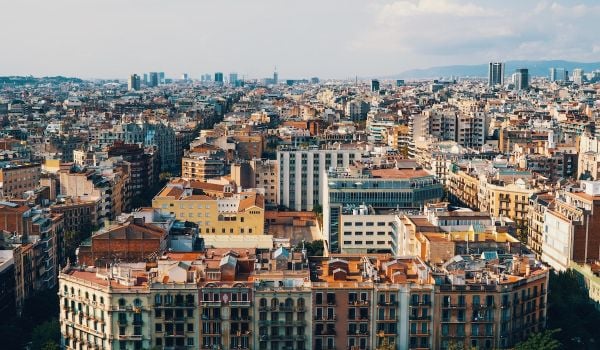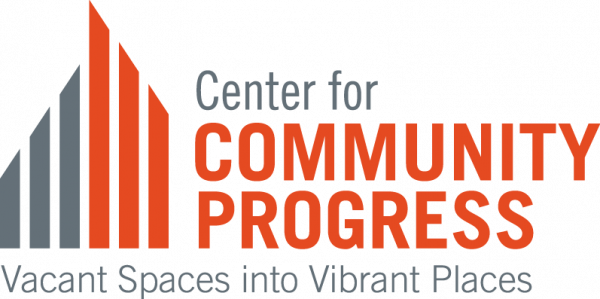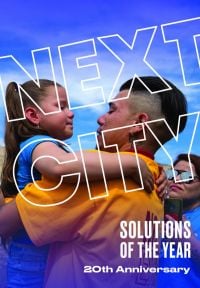As the New York City Democratic mayoral primary, set for June 2021, heats up, more than a dozen candidates are placing their bets on bold visions for the Big Apple.
Current frontrunner Andrew Yang is peddling a localized version of the universal basic income that catapulted him from nobody to presidential contender in 2020. For Kathryn Garcia, the former New York sanitation czar, it’s all about the environment — electrifying city buses and building out 250 miles of protected bike lanes, among other policies.
But one candidate — perhaps more than any other — is looking abroad for inspiration: more specifically to Europe.
Scott Stringer, the current New York City comptroller, has staked his primary claim on transportation, hammering in on the triptych of “buses, walkways and bike lanes.” One key element of that plan? A Barcelona-born street design called superblocks that would transform parts of Manhattan and Brooklyn into fully car-free zones.
“I think you have to have a mayoral administration that wants to be visionary,” Stringer tells me over a Zoom call from his campaign headquarters. “My goal is to change the streetscape, and I do think as part of the plan, we could look at superblocks.”
The superblocks concept was pioneered by architect Salvador Rueda. The idea is simple: closing off the interior streets of three-by-three block areas to through-traffic in order to prioritize pedestrian and other non-motorized forms of travel.
While the design originated in the 1980s, Barcelona’s first superblock wasn’t completed until 2017 under Mayor Ada Colau, delayed in large part by neighborhood concerns such as parking access. There are now six across the city — and a plan to turn virtually all of Barcelona into a giant superblock.
“What the superblock tries to do is not only to pacify the city, but also to give the city back to its citizens,” says Iñaki Baquero, an architect at the International University of Catalonia.
Whether New York could adopt the superblock model depends on a number of factors, including where they will be located and the level of community buy-in, he says.
“Within New York, there are many New Yorks,” Baquero says, “not only urbanistically, but also in terms of the size of the potential superblocks.”
While the wide grid of Midtown could be challenging for implementing superblocks, the areas under 14th Street, where the grid is narrower, would be a perfect candidate for them, he adds.
Laura Fox, the general manager and director of Citi Bike, sees the East Village — where she lives — as a possible superblock location.
“I would be very excited to see something like superblocks in New York City,” she says. “It’s really about changing the hierarchy of the street.”
Seventy-five percent of New York’s street grid is currently reserved for automobile use and the city’s 3 million parking spots take up the equivalent of 11 Central Parks, according to Fox.
“I like to think of it as a rethinking of streets, and of what streets serve what purposes,” she says of superblocks.
Still, reservations exist about the model, especially if it is pushed through too quickly, according to Xavier Matilla, the chief architect of Barcelona, who is responsible for the development of the superblocks project.
“We have first to be aware that it is a long-term transformation,” he says. “We need to be able to implement short-term actions, but keep calm and aware that we may need more time to generate the positive impacts that we are pursuing.”
Working alongside neighborhood associations to design and implement the superblocks was crucial in getting them off the ground, he says. So too was improving public transit options in the affected areas in order to make up for the lost car mobility.
And in Barcelona, robust social housing in the neighborhoods that were turned into superblocks meant that the urban renewal project didn’t dislocate low-income residents and lead to gentrification — something that has happened in New York City.
Fox, at Citi Bike, suggests that testing temporary superblocks in select locations for three to six months could be a way to smooth over the notoriously challenging community board approval process that has killed many a bike lane proposal — much less radical than a superblock.
Stringer highlights the importance of going through a community-informed planning process, but without giving community boards “veto power.” He imagines that the superblocks could fit in with his plan to build 100 new playgrounds across the city, a potential selling point for communities that are on the fence about the project.
“It’s not a top-down, ‘my way or the highway’ model,” he says.
In Barcelona, the environmental and economic impacts of the superblocks have been mostly positive. A 2019 study found that Rueda’s plan to create more than 500 superblocks across the city could save 667 lives per year thanks in large part to the reductions in air and noise pollution that would follow. Despite fears that the superblocks would hurt local businesses, the number of small businesses in one Barcelona superblock increased by 30 percent in three years.
Other cities have followed suit, including Vitoria, in northeastern Spain, and Seattle. Before the COVID-19 pandemic, more than 200 cities around the world had contacted the city of Barcelona with inquiries about superblocks, according to Matilla.
The COVID-19 crisis, Stringer believes, could accelerate more ambitious urban planning models like the superblocks — as New York residents see the benefits of open streets and the expansion of outdoor dining.
“We’re actually creating life on our streets,” Stringer says. “And when you take into consideration a superblock model, you can really build out communities.”
Stringer, for his part, did not say where New York’s first superblock will be — yet.
“That will be with community consultation,” he says.

_920_481_80.jpg)














